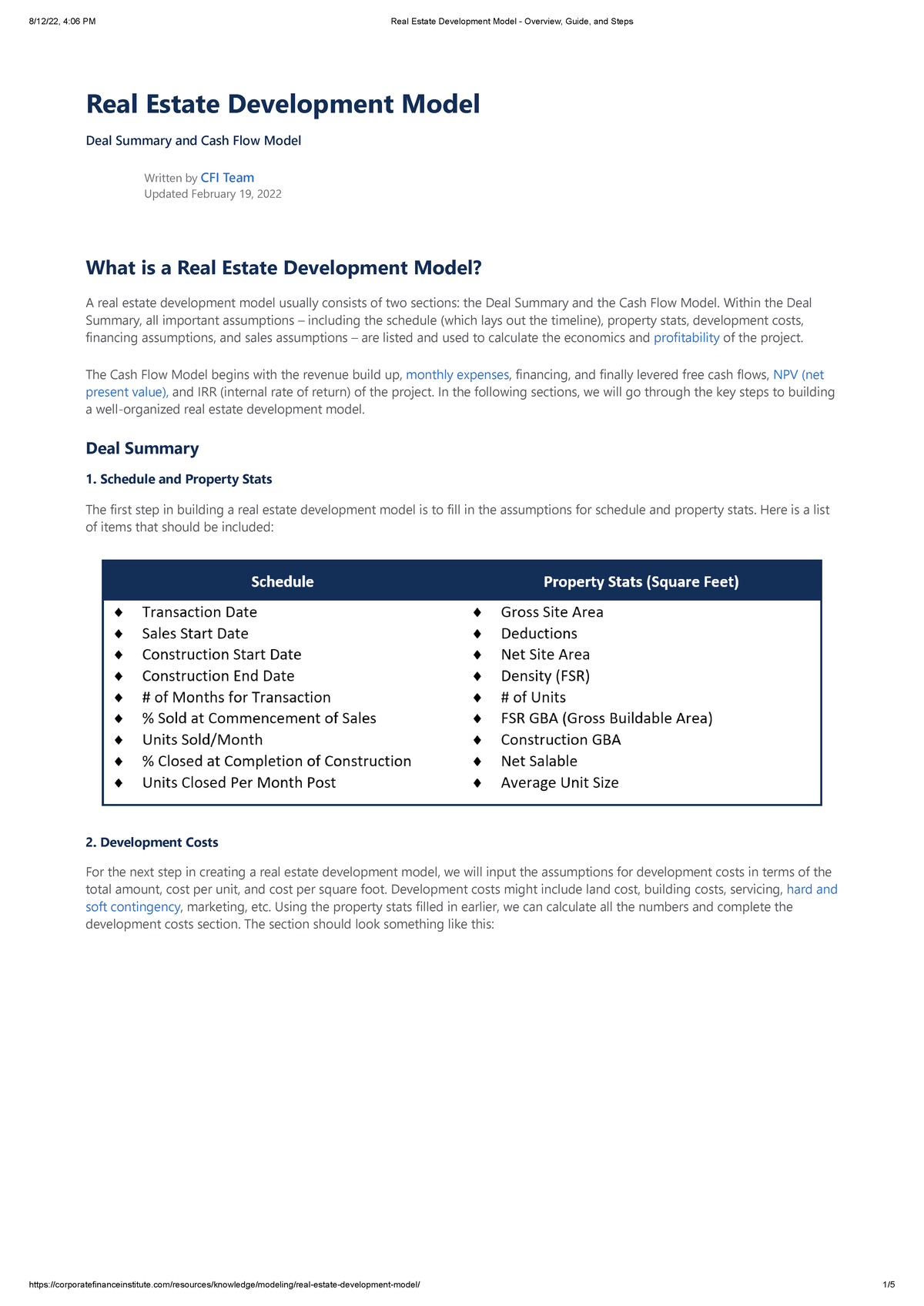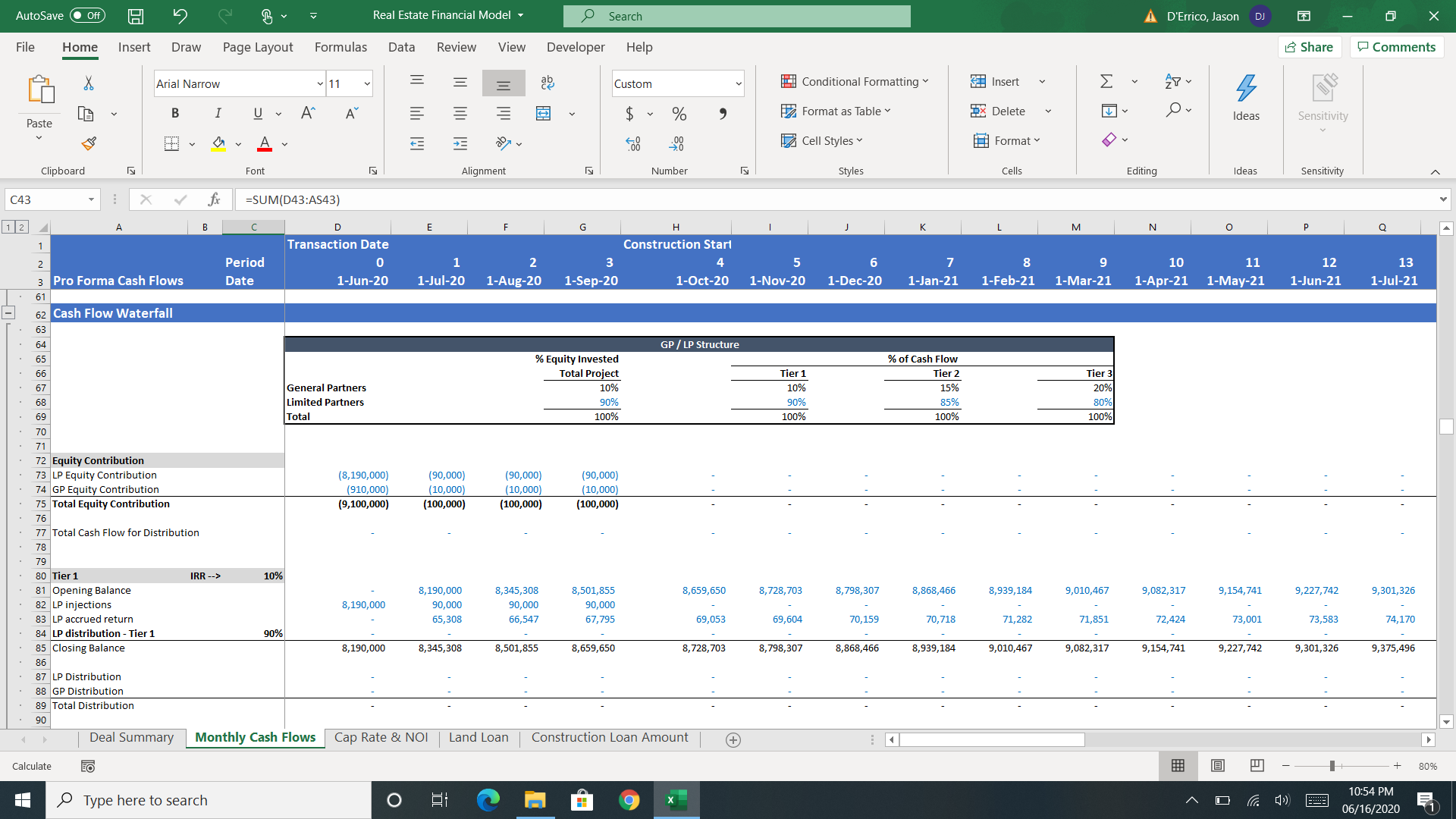
The model should allow for the flexibility to choose between these approaches and adjust the assumptions based on the project’s unique characteristics. The lease-up schedule should be carefully crafted to achieve stabilized occupancy as quickly as possible while maximizing rental rates. The model should incorporate a detailed monthly projection of occupied units, rents, and resulting revenues. This granular approach allows for a more accurate assessment of the project’s cash flows and returns during the lease-up phase.
Tier Equity Multiple Waterfall – Download and Watch Me Build (UPDATED APR
It’s a bit like modeling a tech or biotech startup because you assume an asset gets created from the ground up, but you use both Debt and Equity to fund it – similar to a leveraged buyout. For example, maybe they complete a major renovation that boosts a property from Class B to Class A, or they boost the Occupancy Rate from 70% to 90%, or they modify the ground floor of an office building and add retail units. However, to answer this question in real life, we’d have to build Excel sensitivity tables or scenarios and examine other outcomes. For more about individual properties and how the differences translate into revenue and expenses, please see our detailed article on the real estate pro-forma. Real estate firms require a multi-dimensional, dynamic model that prepares them to adapt to any industry shift or economic condition.
Step 5: Make the Returns Calculations
Since both software programs offer better features such as accuracy, customer service, compatibility with several requirements, compliance, and global participation, it is wiser to use a relevant software program. But then operating-wise, our operating cash flow is actually positive, so we’re using our operating cash flow to repay this, but then we’re using the funds here, to pay for our investing cash flow. So here it is going up slightly, because we are still drawing on more than we are repaying. The next year it is going down slightly, because here we’re repaying more than we’re drawing on. In which case, all we can do is repay what we have left with our cash flow.
Understanding the Real Estate Development Process (& 4 Ways to Scale)

We are simplifying this setup by pretending that the Equity Draws occur all at the end of the first year, not over the first several months of that year. To determine the Permanent Loan amount, we need to estimate the property’s value when the refinancing takes place and then multiply its value by an LTV. After setting this up, we extend these projections until the end of the Construction Period to get the ending Debt and Equity balances. Real Estate Renovation Modeling is quite similar to Acquisition Modeling, and the basic steps in the process are the same.
- Before confidently providing updates, most teams must reach out to third parties, comb through spreadsheets, and verify that all information is accurate.
- Check out our dedicated real estate financial modeling page and schedule a demonstration of Synario today.
- All models are offered either completely free, or on a “Pay What You’re Able” basis with no minimum.
- Certain milestones are dependent on others, but dynamic dependencies ensure project timelines can shift as they evolve.
- Strictly Necessary Cookie should be enabled at all times so that we can save your preferences for cookie settings.
- Under no circumstance shall we have any liability to you for any loss or damage of any kind incurred as a result of the use of the site or reliance on any information provided on the site.
You can see how the IRR changes as the occupancy rate and ADR change, or if the purchase price and holding period change. You can also analyze how fluctuations in the cost of sales and valuation multiples affect returns. Then, you’ll project the Debt Service, including a TI/LC/CapEx Holdback released on a monthly basis, and you’ll calculate the returns to each investor and lender group.
Project requirements tend to vary by the deal type, asset type, location, and other variables, so be sure to select a platform that can auto-populate tasks based on these variables. Most development projects utilize construction loans to fund a portion of the project costs. A development model must meticulously project cash inflows and outflows over the project lifecycle, from pre-development through stabilization and sale. This includes equity contributions and distributions, construction loan draws and interest payments, operating revenues and expenses post-completion, permanent loan proceeds and debt service, and reversion proceeds upon sale. Uses of funds encompass all project costs, including land acquisition, hard and soft construction costs, financing fees, and other expenses.
Lenders will only sign onto deals once the investors/owners/developers have contributed sufficient Equity to pay for the initial costs – similar to how venture lenders operate. You can determine what these “market rates” might be with some commercial real estate market analysis. For decision-makers, such as the CFO at the investment firm and board of directors, the model REFM helps answer key high-level questions. For too many investment firms, when the Coronavirus delivered that punch, their real estate modeling became useless in the blink of an eye. This book presents a new way of thinking about, teaching, learning, and practicing real estate development.
Private placements are illiquid investments, in that they cannot be easily sold or exchanged for cash, and are intended for investors who do not need a liquid investment. So here we see that we are repaying senior notes A here, because we real estate development model have so much cash flow available to repay debt. Of course again this will change, because our interest expense is going to be massive. We have not yet taken that into account, but this is basically how it works, you can see it right here.
We don’t really use these quite as much, because by the time we get to these we’re almost at the end of construction. So then there we sort of switch over and we start paying a much lower amount, because our funds required are simply not as high in this case. Now just to show you with the capitalized interest, I will once again set up a frame here, so you can see some of this a little bit better. So with the capitalized interest here, let’s see what’s going on now you can see that it is being capitalized in the construction phase of the project, for the mezzanine, for senior notes B, and for senior notes A. The first part is just the funds required, minus what we’ve drawn on so far elsewhere, and then the second part the maximum, minus however much we’ve drawn from there.
